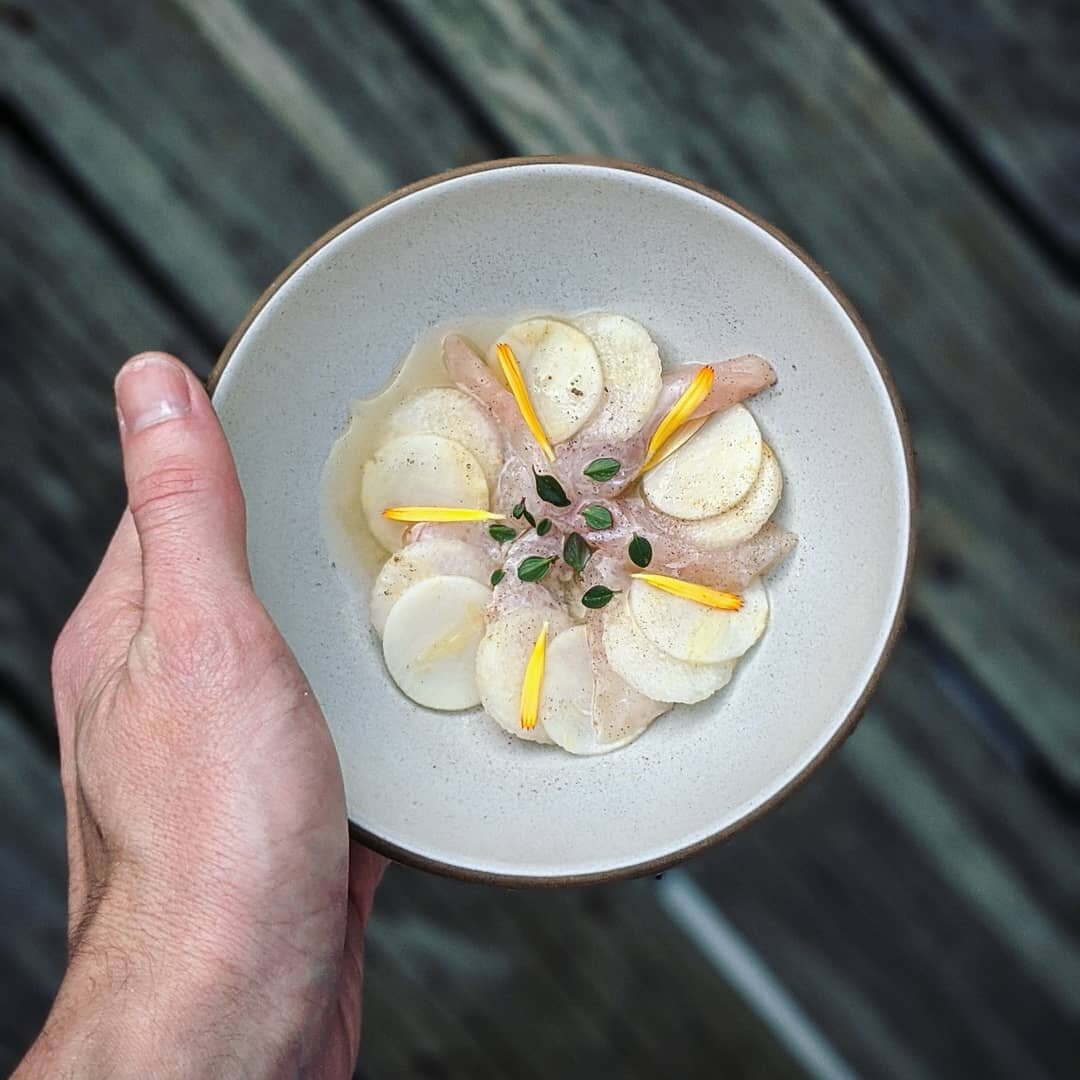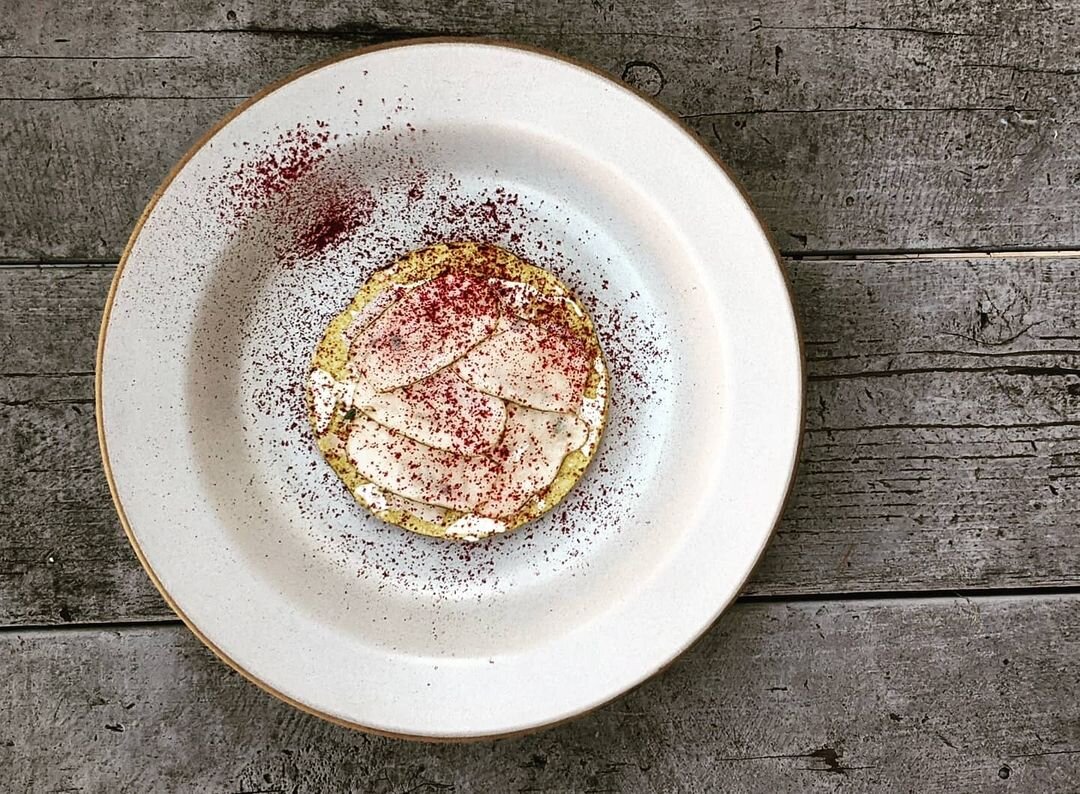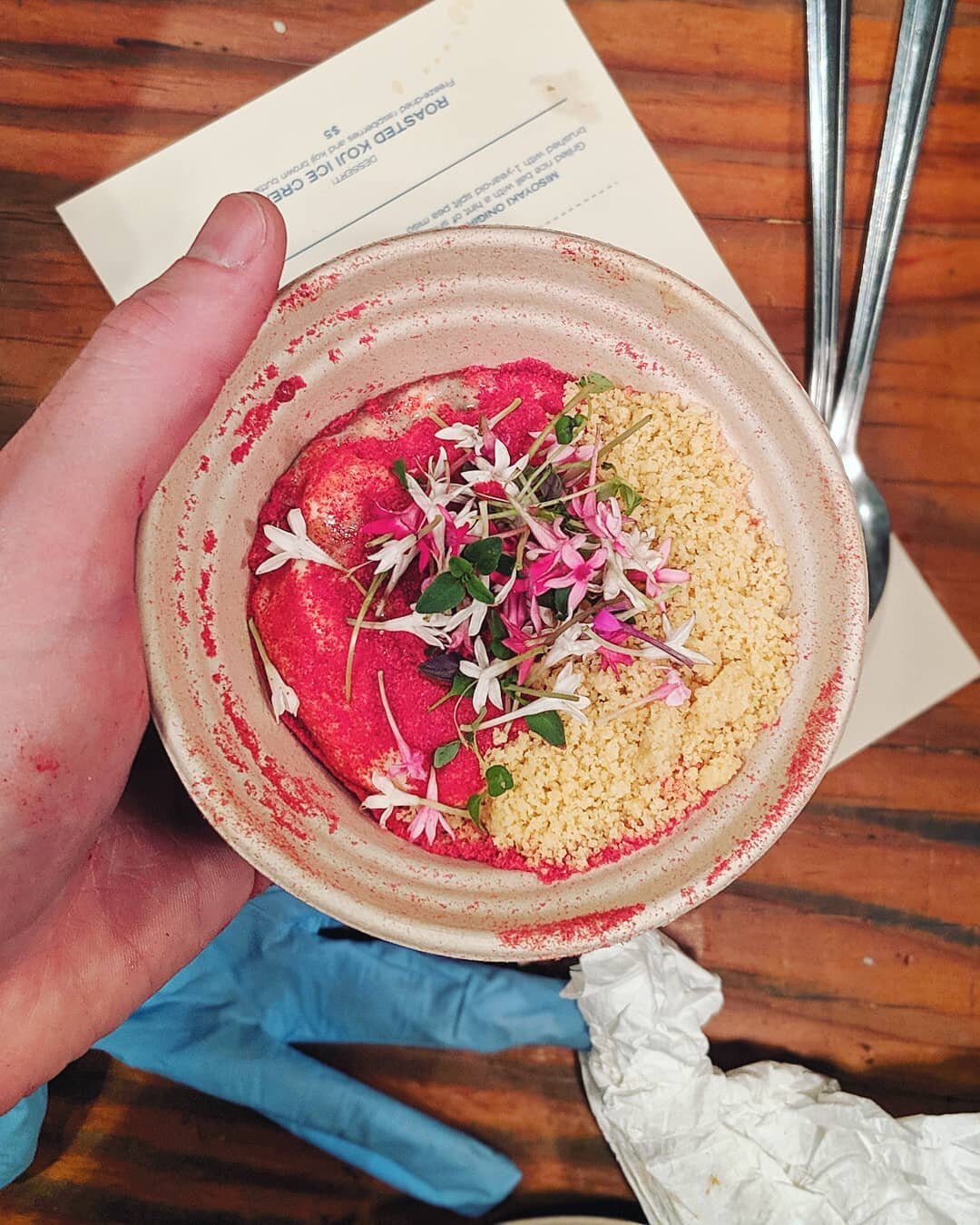How To Develop Recipes
In my day job at a major tech company, I build products that impact billions of people.
At that scale, even the smallest product launches have a meaningful impact on the lives of thousands. This is an incredible responsibility, so each product launch is backed with rigorous analysis. And to remain ahead of the competition, we must also find ways to inject creativity into that data-driven work.
In this post, I’ll share how I apply the same product development approach used in tech to recipe development. With this approach in hand, you’ll make better, more creative food — and you’ll learn faster, too.
In San Francisco, I host ramen, ceviche, and ice cream pop-ups with original recipes. The ramen is clam-based and New Nordic-inspired, while the ceviche subs the cuisine’s traditional components with ingredients produced by fermentation and modern cooking techniques. The ice cream, meanwhile, is made with roasted barley koji, raspberry powder, and thyme.
I developed each of these recipes through an iterative recipe development process inspired by my work in tech. The process aims to balance spontaneity and creativity with evidence-based, incremental progress. I’ve developed confidence in this recipe development approach and believe it can be utilized by chefs at home and in the industry. What follows is an explanation of the approach and suggestions for implementing the approach at home.
The approach
At a high level, recipe development requires two distinct processes:
Exploration: The process wherein a chef explores varying techniques, food genres, ingredients, and influences. This is unfettered and disorganized creativity for its own sake.
Exploitation: The process wherein a chef hones the particular techniques, ingredients, and flavor profiles that define a final dish. This is evidence-based iteration for the sake of pursuing perfection.
In what follows, I’ll explain how to optimize and balance exploration and exploitation to produce the best food in the shortest amount of time.
A chef’s ability to optimize the transition from exploration to exploitation is key to this approach’s success, and we’ll discuss optimizing this transition later in the post. As you’ll see, the approach ultimately calls for specialization but only does so after drawing appropriate inspiration. It balances breadth of influence with depth of expertise, and it does so on a schedule. Let’s get started.
Process #1: Exploration
Imagine a landscape of many peaks and valleys. Some peaks are far higher than others. If I aim to climb to the highest point, I am better off if I start my climb at the base of the highest peak.
The potential dishes that a chef can create occupy a landscape much like these peaks. Some dishes are far more delicious than others. If I aim to make my recipe as delicious as possible, I am better off using the ingredients and techniques that enable such a recipe to come to life.
This is why we begin the recipe development process with exploration. Before a chef chooses to iterate on a recipe (i.e. exploitation), the chef must first explore the range of influences, food genres, techniques, and ingredients that might play a part in the recipe. If a chef begins iterating on the recipe before doing such exploration, the chef risks climbing to the top of the wrong peak.
What exploration looks like to a given chef is very dependent on what they are optimizing for.
If you haven’t decided the genre of the dish, exploration might be entirely freeform. Try anything and everything until a particular genre (or a mix of genres) shows promise.
If you’ve decided the genre of the dish but not the dish itself, exploration might be looking for particular dishes within that genre or opportunities to utilize external influences from other genres to influence your dish’s trajectory.
If you’ve decided the particular dish, exploration might be looking for particular cooking techniques, ingredients, or external influences to execute the dish as deliciously as possible.
The process is essentially choosing your peak (which need not be constrained to one genre or type of dish) by ensuring that you have explored the promise of each of the various paths you can take.
For this reason, the exploration process should feel unconstrained. It should feel out of your comfort zone. This is your opportunity to explore where your creativity takes you. Do not worry about measurements. Do not worry about reproducibility. You are simply looking for potential.
HOW TO EXPLORE
There are many ways to execute the exploration phase. Here’s what I find useful:
Try cooking techniques you’ve never tried before. Make them up if you have to!
Try ingredients or genres of food you’ve never tried before. Try combining the techniques of one genre with the ingredients of another.
Eat at restaurants that inspire you. My vacations are only food trips.
Try recreating recipes from chefs that inspire you. Sometimes, I’ll find a post from a chef on Instagram and try to recreate the dish without knowing their recipe. I also read a lot of cookbooks.
Cook with a friend. You’ll be surprised how different people speak a different kitchen language, reaching for one ingredient when you might reach for another.
Good — or at least curious — chefs are always exploring. But making exploration an explicit part of recipe development is key to ensuring that you aren’t pursuing a local optimum (i.e. a shorter peak). When I am creating a recipe with a deadline, I prefer to allocate 1/3 to 2/3 of my time to exploration (depending on how ambitious I aim for the meal to be).
Process #2: EXPLOITATION
Exploitation is climbing the peak. It happens after you’ve set your sights on a particular flavor profile or idea and you’ve filled your toolkit with alternative means to execute that idea. With exploitation, your job is to iterate rapidly to find the best way to execute that idea.
The most evidence-based means to iterate on a recipe is with A/B testing. A/B testing is where you test two or more versions of the same recipe but change one — and only one — component in each version. The goal is to isolate the impact that this component has on the dish as a whole, enabling you to identify the “best” way to approach that component. A rigorous A/B testing approach will test every component, including which ingredients, which techniques for those ingredients, and which ratios of those ingredients.
Once you’ve identified the ideal approach to a certain ingredient or technique, subsequent tests should iterate on other components of the dish. Note however that certain components cannot be fully isolated because they interact with other components you want to test. For example, you cannot test salt levels and then test acidity levels, because acidity levels can influence how we perceive salt levels. As such, one would need to test each acidity/salt combination to fairly test how salt and acidity impact the dish as a whole.
HOW TO EXPLOIT
As you can imagine, the exploitation phase is tedious, and it is not always particularly fun. Exploitation can in some ways suppress your creativity and autonomy as a chef, and that’s why it’s possible to begin this iteration phase too early.
For this reason, it is important to enter the exploitation phase with strict deadlines. Perfect is the enemy of good. And as someone famously said, “Art is never finished — it is only abandoned.” The exploitation phase should have a defined end date wherein you say that your work is “good enough.” There’s always room for more iteration later, and it’s important that you begin to gather real-world feedback in addition to your A/B tests.
In addition to time-bounding your iteration efforts, here are some other tips for A/B testing your food:
Avoid bias. Inevitably, you’ll have a hunch about which of two tests will work better. But if you truly want to learn, try to eliminate bias when testing. I don’t expect you to blindfold yourself, but at least give both A and B a solid attempt!
Measure and take notes. The more you hone in on the ideal taste, the more subtle the tests will become. Documentation will become increasingly important.
Isolate ingredients: To speed up the early stages of the iterative process, I like to cook isolated components of a dish and test combinations of those components rather than cook entire dishes many times. For example, with ramen, I create dashi, clam broth, reduced white wine, and other ingredients and test ratios of their combinations. This is faster than making a dozen broths to achieve the same effect.
Serve friends and coworkers. A/B testing food can sound wasteful, but it’s not. Since you’ve already completed the exploration phase, you should have a decent idea of what is basically inedible, so all of these A/B tests should be at least good enough to serve your friends or coworkers. Make two versions of something, identify the best one, then either combine them and serve them as one or serve them separately. Your guests don’t need to know about the testing that occurred beforehand.
Be on the lookout for “free” testing opportunities. Certain cooking methods (e.g. sous vide, marinating) are particularly easy to A/B test with because the foods can be isolated (e.g. in a bag or container) with different ingredients but the same cooking method. Similarly, if you’re cooking in multiple batches (e.g. two soup pots at once), you might as well change each batch a tiny bit.
Rely on teamwork. For commercial kitchens (or even online food communities), you can leverage the work of many to complete the same exploitation. In the early days of David Chang’s Momofuku restaurant, the restaurant’s cooks would test new approaches to the restaurant’s menu and email each other each evening with their findings. David Chang credits this approach for the restaurant’s ability to hone in on its style over time.
IT NEVER ENDS
Once you’ve debuted a dish, this exploration- and exploitation-based approach does not need to end. Whether you’re concurrently starting the exploration phase for another new dish or simply taking in the world around you, there will always be opportunities to expand the breadth of your knowledge and utilize that knowledge on an existing dish where you’ve already exhibited depth of expertise.
To that end, iteration doesn’t need to end either. If the format allows, you can allocate a small percentage of each batch or each day’s yield to testing. Imagine how much better the local pizza shop would be if they made one test pizza a day. Imagine how much they would have learned over the course of many years.
In tech, we launch products to small percentages of users before determining whether to bring those products to the masses. The data that we gather from these tests enables us to iterate better and sooner, and they fuel our ideas for future exploration and discovery. Over time, the makeup of teams change and so too does our ability to refine the idea. Rather than consider recipe development as a journey to a destination, you should consider your recipe development as a continuous journey with occasional milestones.
Conclusion
This approach has worked well for me in both business and the culinary world. With time, you’ll have a better feel for when you should focus on exploration versus exploitation. And in the meantime, you’ll eat some very tasty food. Good luck.



